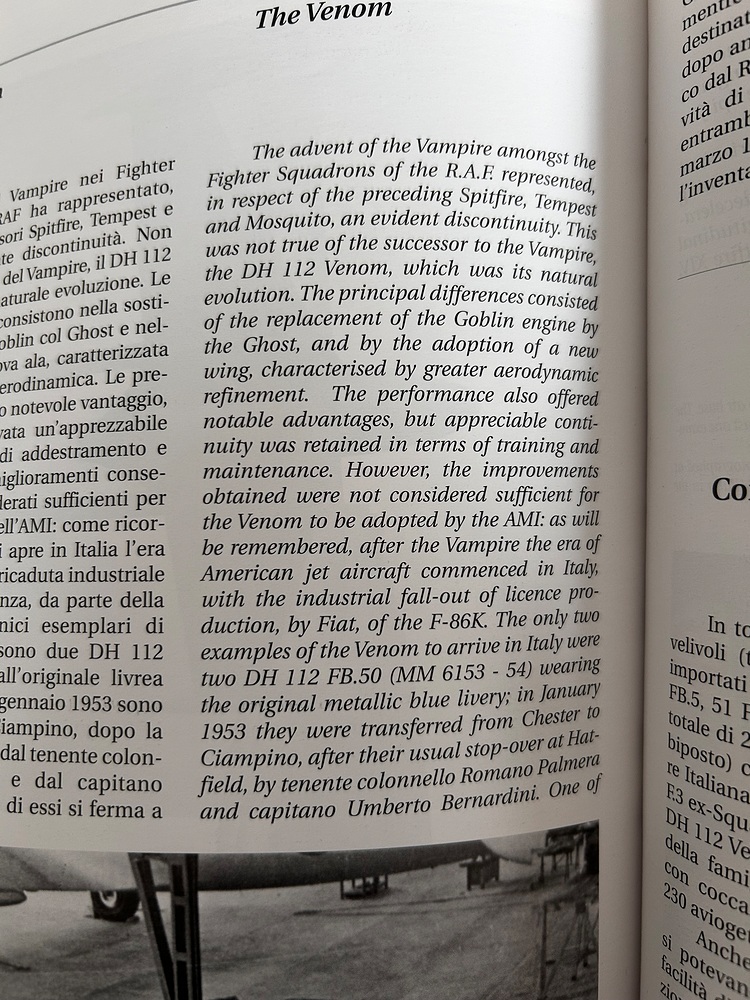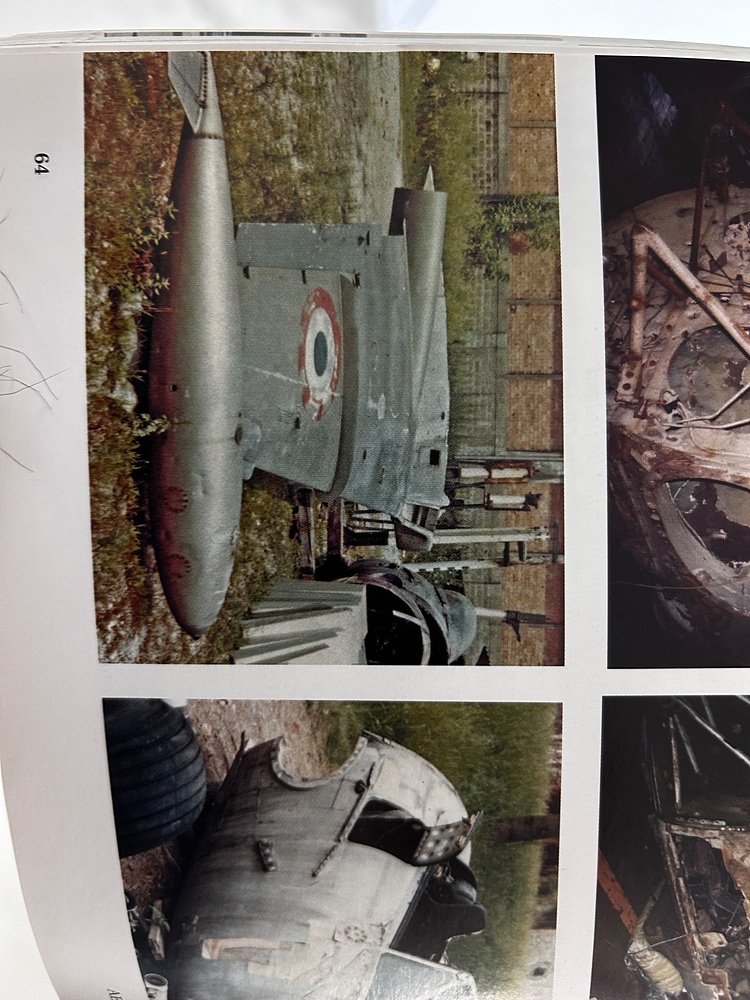- Yes
- No
Introduction: The Italians were prolific users of the Vampire, but never used its successor, the Venom, in service. Despite this, it was tested by the Italian Airforce.

Description: The Venom was a follow-on to de Havilland’s famous Vampire. The aircraft looked outwardly similar, but differed mainly in the use of a swept-wing, a more powerful engine and greater use of metal construction. The aircraft was also designed from the outset as a fighter-bombers, and thus possessed strengthened wings in order to carry a larger ordnance load, generally consisting of an assortment of bombs and rockets. The Venom also had a potent gun armament, which consisted of four 20mm Hispano cannons. De Havilland pitched the Venom as a successor to the Vampire, both to the RAF and to export customers who had purchased the Vampire. One of these countries was Italy, which was already a prolific operator of the type, operating dozens of Vampires in its service. Therefore, it is not surprising that the Italians chose to evaluate the Venom, in an effort to continually modernise their airforce, especially due to the rising tensions of the Cold War.

History: The Venoms tested by Italy were the FB.50 variant, essentially an FB.1 which was modified for export. Two aircraft were delivered from Hatfield, registered as MM6153 and MM6154 respectively. On January 29th, 1953, the aircraft were flown to Italy, with one going to the Reparto Sperimentale Volo (RSV) at Rome-Ciampino, the other going to the Scuola Aviogetti at Foggie-Amendola. Both aircraft were painted with a metallic-blue paint scheme, a rather unique paintjob, emphasising their role as experimental test vehicles. In 1953, the second aircraft was returned to the RSV. Due to the limited number of aircraft procured, with only two being purchased, and a limited amount of spare parts for the type in Italy, the two aircraft had very short flying careers and became rather difficult to maintain in operational condition. Due to this, MM6154 was withdrawn from service in July of 1954, likely being reduced to spares, since MM6153 was able to last for another three years with the RSV at Ciampino until 1957. Despite offering much promise, MM6153 and MM6154 were the only two Venoms to operate in Italian colours, and no further aircraft were procured. It is likely that the two were procured to test the waters for a purchase, or license production. In the end, neither of these prospects ever materialised, and the two aircraft remain a unique and forgotten element of Italian aviation history. It is likely, however, that they still played their part in forging the Post-war Italian aviation industry, with their service at the RSV likely having generated a great deal of information regarding the design, handling, performance and operation of high-speed jets, helping pave the way for future aircraft development. Oddly enough for an oddball type aircraft, one of them still survives, with MM6153 still surviving, where it is currently in store at the Museo Nazionale della Scienza e della Technica in Milan.

Performance:
Spoiler
DE HAVILLAND VENOM FB.1:
spec metric english
wingspan over tanks 12.7 meters 41 feet 8 inches
wing area 26 sq_meters 280 sq_feet
length 9.71 meters 31 feet 10 inches
height 1.88 meters 6 feet 2 inches
empty weight 3,674 kilograms 8,100 pounds
loaded weight 6,945 kilograms 15,310 pounds
maximum speed 1,030 KPH 640 MPH / 555 KT
service ceiling 13,720 meters 45,000 feet
range 1,730 kilometers 1,075 MI / 935 NMI
Armament: 4x 20mm Hispano cannons
Optional: Various bombs and rockets (RP-3 and HVAR)
Aircraft was unlikely to have carried bombs and rockets, but was certainly capable of doing so.
Conclusion: I believe that this would be an interesting addition tp the Italian tree, bringing a little known chapter of Italian aeronautical history to light. The aircraft would also be easy to implement, since the Venom is already in the British tree. Thought there will be opposition to it due to it being “copy-paste”, I believe it would make for a great early jet attack aircraft, either in the strike line, or in the bomber line. I would also like to thank @Nicho and @Headnaught for their help with this suggestion.
Sources:
Spoiler
“Venom: De Havilland Venom and Sea Venom, The Complete History” by David Watkins
de Havilland DH.112 Venom - Wikipedia
https://www.baesystems.com/en/heritage/dh112-venom-sea-venom

